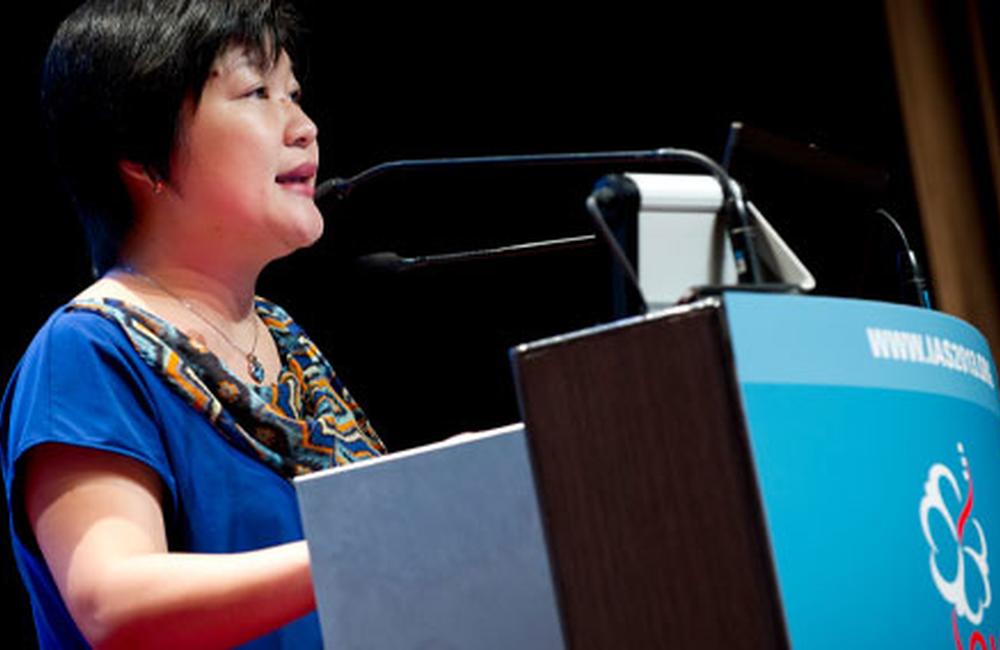
Low dose lopinavir/ritonavir (LPV/r) – 70% of the standard dose – worked as well as standard dose in maintaining viral suppression and with less dyslipidaemia in children with HIV in Thailand, Dr Puthanakit on behalf of the HIVNAT 152 PEARL study told participants at the 7thInternational AIDS Society conference (IAS 2013) last week in Kuala Lumpur, Malaysia.
Findings from this multi-centre, randomised open-label trial, at eleven sites in Thailand, comprising 200 children under 18 years of age, weighing from 25 to 50kg, virally suppressed (viral load under 50 copies/ml), showed low-dose LPV/r also reduced costs and the potential for long-term complications associated with cardiovascular disease.
At week 48, more children in the standard arm had higher cholesterol (over 200 mg/dl) and higher tryglyceride (over 150 mg/dl) levels than those in the low-dose arm, 34.4% compared to 20.6%, p = 0.03 and 60.4% compared to 44.3%, p = 0.03, respectively.
In Thailand, children experiencing treatment failure on nucleoside reverse transcriptase inhibitor/non-nucleoside reverse transcriptase inhibitor (NRTI/NNRTI) regimens have limited second-line options. LPV/r (Kaletra) is the most commonly used protease inhibitor (PI) in children and has shown excellent efficacy in ARV-experienced children. The recommended minimal level of LPV in the blood (Cmin or trough) is more than 1mg/dl in PI-naive children.
However, dyslipidaemia (increased levels of cholesterol and triglycerides) is associated with LPV/r, so increasing the risk of heart disease with long-term use.
A previous study among Thai adolescents living with HIV, with a median age of 13.5 years (IQR: 12-15), showed that using 70% of LPV/r standard dose maintained adequate levels of drug in the blood. Low dose compared to standard dose had a mean AUC0-12h of 83.1 and 93.8 mg.h/L, respectively.
The researchers hypothesised that viral load suppression would be maintained with adequate drug levels and less dyslipidemia using low dose LPV/r (70% standard dose) as maintenance therapy compared to standard dose.
From June to December 2011, children already on a LPV/r-based regimen, with viral load under 50 copies/ml were randomly assigned by minimisation scheme (to minimise imbalance) to the Food and Drug Administration (FDA) recommended standard dose of LPV/r heat stable tablet or low dose.
Exclusion criteria included: protease-inhibitor PI resistance, a viral load over 1000 copies/ml after six months on a PI-based regimen, being on rifampicin, nevirapine or efavirenz because of drug interactions with lopinavir; and on a double-boosted PI regimen.
Twice daily dosages for children weighing between 25 and 35kg were 300/75mg or 200/50mg for standard and low-dose LPV/r, respectively; and for children over 35 to 50kg 400/100mg and 300/75mg, respectively.
The primary endpoint was the proportion of children at 48 weeks with suppressed viral load (under 50 copies/ml). Secondary endpoints included the lowest concentration of lopinavir in the blood measured after a dose but just before the next dose-at 12 hours-(Cmin or trough) and dyslipidemia.
Of the 199 children with a mean age of 13.4 years (standard deviation [SD] 2.2) and mean CD4 count of 786 cells/mm3 (SD 305) 98 and 101 were assigned to standard and low-dose arms, respectively.
The most commonly used NRTI backbones were zidovudine/lamivudine (47%), zidovudine/didanosine (17%) and tenofovir/lamivudine (16%).
The mean time on ART was 8.8 years and a mean of 3.5 years on a LPV/r-based regimen.
The distribution between those weighing 25 to 35kg and 35 to 50kg was comparable.
Intention-to-treat analysis at week 48 showed the proportion of children with suppressed viral load was 91.8% and 88.1% (difference -3.7%, 95% CI: 12.0-4.6%), p = 0.38 in the standard- and low-dose arms, respectively.
While the per-protocol analysis showed the proportions to be 93.7% and 91.8% (difference -1.9%, 95% CI: -9.4-5.5%), p = 0.62, respectively.
Six of the seven children with a viral load above 1000 copies m/l had a LPV level lower than the limit of detection suggesting poor adherence.
Multivariate analysis showed both adherence under 95% (adjusted odds ratio aOR=3.3 (95% CI:1.3-1.81) and weighing between 35 and 50kg (aOR=3.6, 95% CI: 1.2-10.8) had over a threefold increased risk of virological failure.
In the standard- and low-dose arms median lopinavir C trough was 6.9 (0.3-20.4) and 5.2 (0.2-11.8) mg/dl, respectively at 48 weeks.
Of the 7.3% (14) who had a C trough under 1mg/dl four were in the standard arm and ten in the low-dose arm.
A significant proportion of children in the low-dose arm had a greater reduction in both cholesterol and trygliceride levels compared to the standard arm.
Findings from this study, Dr Puthanakit noted, could only be generalised to children with controlled, undetectable viral load, not to children with high viral loads just starting ART.
Dr Puhanakit agreed with Dr Diana Gibb from the Medical Research Council Clinical Trials Unit in London who commented that the results "would not apply to the use of liquid lopinavir/ritonavir therapy since this study was done with tablets that have a higher bioavailability."
Puthanakit T et al. A randomized study comparing low dose versus standard dose lopinavir/ritonavir among HIV-infected children with virological suppression. 7th IAS Conference on HIV Pathogenesis, Treatment and Prevention, Kuala Lumpur, abstract MOAB0101, July 2013. View this abstract on the conference website.
